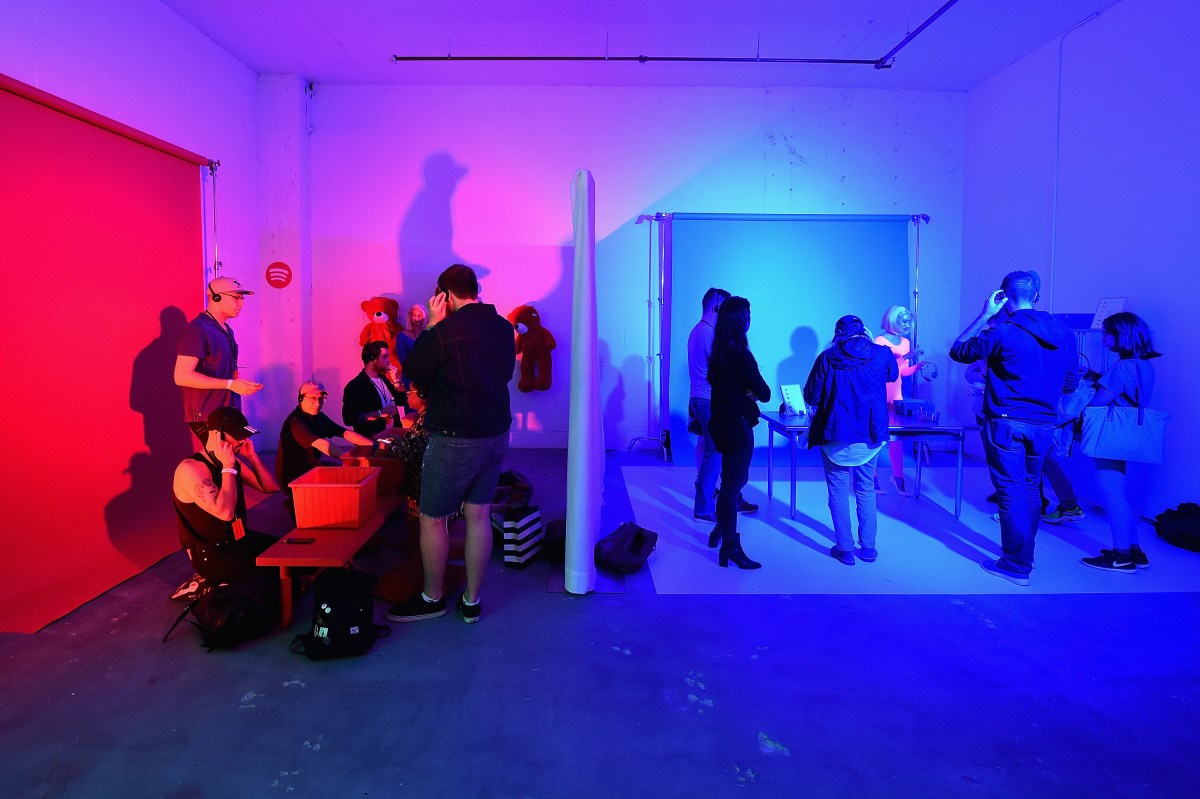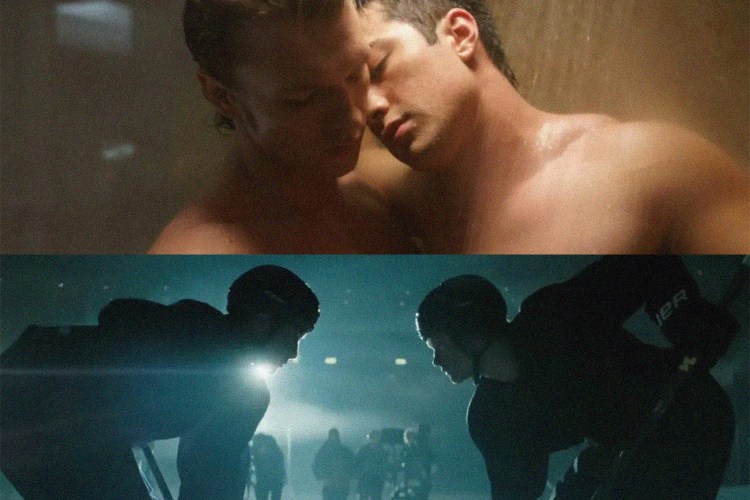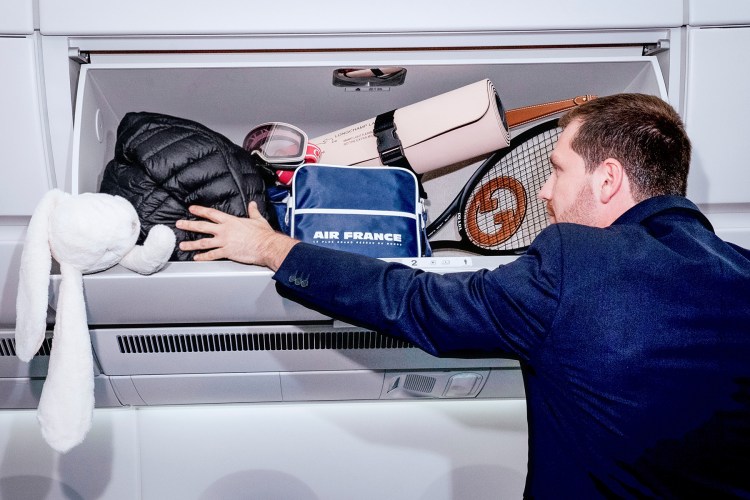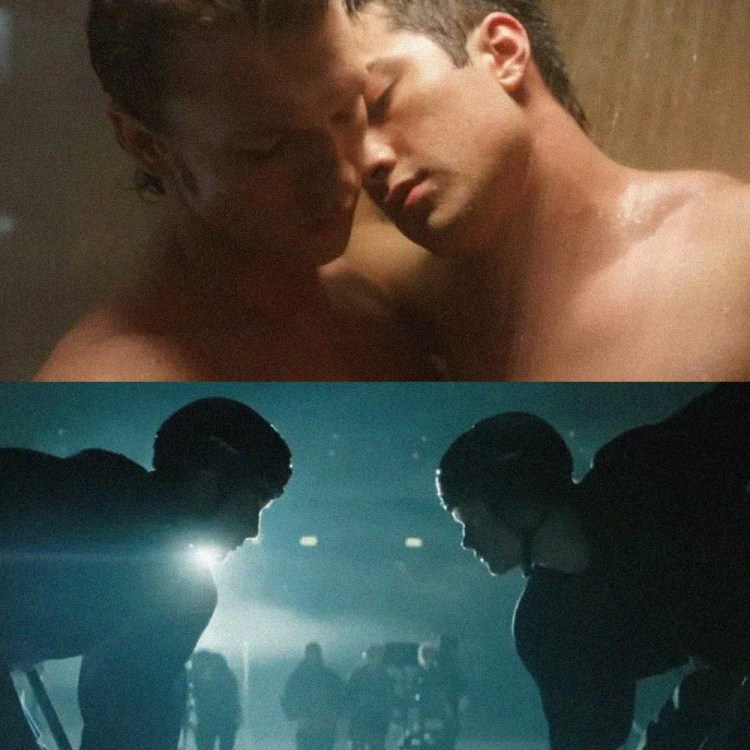The modern era has us trained to meet all new things with skepticism, if not total wariness. Most convenience-increasing technology works covertly in service of capitalism, collecting our data and reporting it back to whomever can profit from it; fun games that tell you what dog breed or fine art masterpiece you most resemble end up being used to advance surveillance capabilities. The widespread existence of escape rooms, which I don’t remember being a thing for the majority of my life, is one of those things. Why do they exist? Why do people go to them? Who made us think that being trapped in a room would be fun?
In case you haven’t been to one yourself, surely you’ve passed an escape rooms. They’re everywhere these days. Places where groups of people — from as few as a couple out for a date night to as many as a posse of eight — are put in a room where the have to solve puzzles and riddles in a certain amount of time in order to get out of the room.
My hunch was that some nefarious business guru was to blame, some corporate efficiency expert. The only thing I knew about escape rooms was that sometimes workplaces made all their employees go to them for “fun” “team-building” exercises, and it was suspicious to me that they would do that after hours to people they already technically trap in an office together every day. But, on the chance that there was more to it than that, I queried friends and family for different perspectives.
I asked my friend Scout if she had any thoughts on escape rooms, and she did not, “other than they are apparently fire traps.” Scout once informed me that we could not stay in a hotel I had booked in Eastern Turkey because we would definitely die if there was an earthquake, which was likely, so I trust her information on things involving personal safety and made a note to ask about fire safety before I visited an escape room myself.
Then I turned to my cousin and his wife, while FaceTiming with their twin babies, if they had any thoughts on escape rooms. They’d gone to one on a date before they were married, and my cousin’s wife said she was initially excited about it, but when they got into it, she felt oddly out of her depth. It felt like the room called for a type of thinking she wasn’t used to. Meanwhile, my cousin — who I think designs video games and I know has played a lot of video games — excelled at it. He agreed that he felt his familiarity with the logistics of electronic game-playing helped him. My friend William also felt there was a gamer-ness to them. He said he liked them and that he did feel like his “gamer brain” was at work when he played them.
What I’m trying to say is that nobody seems to understand why we’ve turned into the United States of Escape Rooms. From coast to coast, big cities and suburbs, north, south, east and west, you are likely not far from one of these places. They’re in strip malls tucked between the nail salon and the Subway; there’s an Orthodox-Jewish themed escape room in Midwood, Brooklyn in which attendees flee a Pogrom; the musician St. Vincent teamed up with Spotify to create one to promote her 2017 album; there’s one in Charleston, S.C. with a bar. That seems like an interesting idea: get people drunk and get them to try and escape. I’d actually pay to watch that, but I’m not sure I’d participate.
I had figured escape rooms were inspired by haunted houses or immersive theater (like Sleep No More) and some do consider 5 Wits, an interactive game-style theme park launched in Massachusetts in 2004, to be a precursor to today’s escape rooms. But a little bit of research revealed my cousin’s wife and William were onto something: the concept of the escape room was inspired by point-and-click adventure games, played online or on the computer. According to the team behind Big Escape Rooms — which has locations in Atlanta, GA. and Silver Spring, MD — the game that really inspired today’s physical escape rooms was the digital Crimson Room, created by Toshimitsu Takagi in 2004.
Escape rooms originated in Asia — a Japan Times article indicates that the Japanese original, Real Escape Game, launched in 2008 — before catching on in Europe and the U.S. SCRAP Entertainment, Inc., the company behind that first escape room in Japan, opened the first U.S.-based escape room in 2012, in San Francisco. In an article looking at the surprising profitability of the escape room industry. MarketWatch looked at escape room directories and calculated that there were zero “permanent rooms world-wide” at the beginning of 2010 and “at least 2,800” by July 2015.
But still, you wonder: aside from profitability, what accounts for the sudden explosion of these places? What makes someone want to open up an escape room?
Akos Gabossy, 32, is the founder of a franchise of escape rooms called PanIQ, launched in Hungary in 2012. He opened his first U.S. location in 2014, in Los Angeles and the business now has locations all over the U.S.
When Gabossy was growing up in Budapest, his parents didn’t have a lot of money. “I always had to be creative and play with whatever toys I had—which were generally not the toys I wanted,” he says. When he spent time in Los Angeles as a high school exchange student, he discovered Chuck E. Cheese — an entire franchise business geared at creating enormous spaces just for kids to have fun. That was his first business venture when he returned to Hungary. He built two kids’ entertainment centers, similar to Chuck E. Cheese though less themed, then started looking around for his next business venture. This time, he wanted something that could be fun for both kids and adults.
He found it among the rubble of ancient buildings in “Ruin pubs”— bars located in old ruins where, according to Gabossy, “people can buy beer really cheap [and] the atmosphere is very chaotic” — which were big in Budapest at the time. While thinking about how to create similar, but different, spaces, the idea struck him: “Why don’t we try to recreate the PC games from the 2000s where the people can find stuff on their computer?” (He later clarified that by “PC” he meant “point-and-click.”)
I mention to Gabossy that after our conversation I was going to try an escape room but I worried about the whole fire safety thing, and what if I felt claustrophobic? He assured me that the room shouldn’t actually be locked. “That’s just part of the marketing,” he says. “If you feel claustrophobic inside, that’s a wrong room.” The point, is the story of the room, and the game of solving it: “You move from puzzle to puzzle until you reach the final step.” The latest rooms are considered Generation 3 and are more high-tech, with increasingly spectacular puzzles and props, “more like a Hollywood studio,” Gabossy says.
“You don’t have locks and keys in the room, and there was a main computer that everything is connected to,” he explains.
Gen. 1 and 2 are more analog, involving physical locks and keys. When you solve a puzzle in one of those rooms, all the action happens where the puzzle is. In a Gen 3 room, solving a puzzle in one corner triggers something happening in a totally different part of the room.
I figured that escape rooms were basically for nerds who wanted to LARP being in video games, but that didn’t explain their popularity. A white paper I read indicated that they’re popular among a whole wide array of different demographics. I asked Gabossy who his target demographic is — young people? Mostly men?
“It’s very, very hard to describe who is our actual target audience because pretty much anyone who is older than six and younger than 99 can have fun. It’s a peaceful, mainstream activity — you don’t have to be a genius,” he admits. “Anyone who goes to a movie theater is a potential customer.”
I didn’t really understand what he meant by that until I went to an escape room myself. Going to a movie theater has become something of a rarity — according to the Wall Street Journal, ticket sales in 2017 were the worst since 1995. If you make the effort to go to a movie theater, to buy the tickets and the overpriced snacks, you probably really want to be there. You enjoy the experience of immersing yourself in what you’re about to see, of leaving reality outside the big dark room and giving yourself over to the world on screen.
You make a similar choice with an escape room. They’re not cheap: Tickets run about $25 to $30 per person, generally. And they can feel hokey if you’re inclined to self-consciousness. You are basically expected to pretend, as an adult, that you really are in the Wild West, or an Indiana Jones movie, Alice in Wonderland or whatever else.
But when the door closes, you have 60 minutes to complete a whole bunch of puzzles, and you paid $30 to be there, so why would you want to lose? The time limit might just be to prevent people staying in a room all day (turnover is the key, just like it is in a restaurant or a carnival) but it also forces you to immediately participate, to make a snap decision to embrace the experience and forget about being cool. There’s no time to be aloof in an escape room, and why would you pay $30 to be performatively bored, anyway?
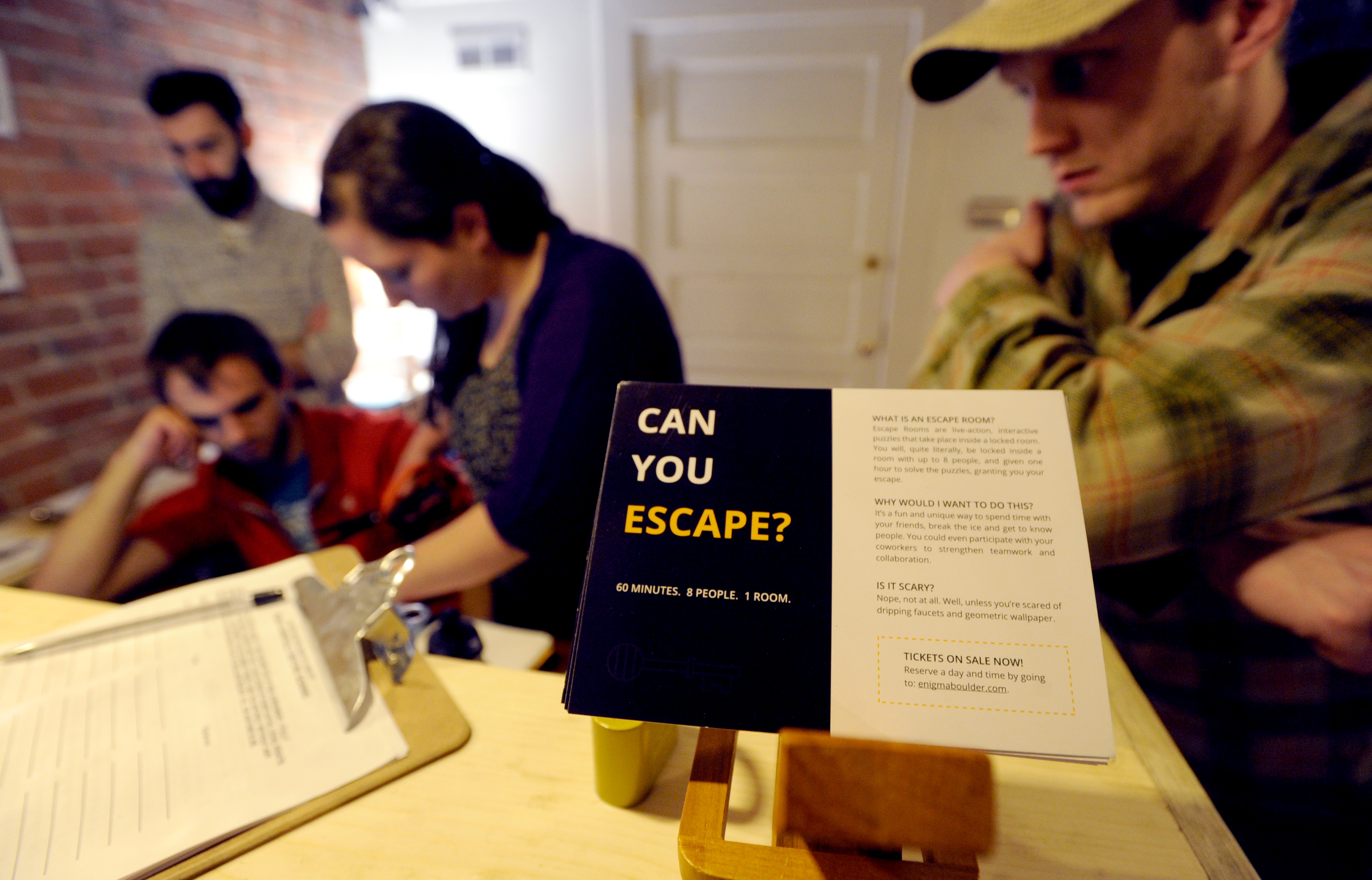
I’ve been living in the woods in Wisconsin, so I checked out escape rooms in the nearest city, Green Bay. I found three, emailed all of them and picked the first one that wrote back: The Encrypted Escape.
I cajoled my friends Bre and Sly to come with me through some light bribery but also because I thought they might enjoy it. Sly has an engineering degree and Bre is an art teacher and they are both very smart and good at figuring things out and also they play Skyrim. We pored over the room options and ultimately decided on something involving the word Cthulu, which I later learned is from the novels of H.P. Lovecraft. (When I texted Bre, “What is a Cthulu???” she sent back a website that looked like it was made on Angelfire, which I refused to even try to read. “Squid monster,” she eventually summarized.)
The younger guys working at Encrypted Escape that Sunday afternoon were genial and accommodating, and warned me that Encrypted is sort of atypical, as far as escape rooms go. Designed by a couple, each room is pointedly meant to engage both left- and right-brain thinking, avoiding that not-a-gamer feeling my cousin’s wife had. The door would not be locked, so we could leave to use the bathroom or whatever else whenever we wanted. We were asked to select from a variety of fancy old trunks and suitcases to lock our phones in (the Encrypted folks are very serious about their intellectual property, so no photos are allowed), given a quick explainer on how a variety of different locks worked, handed two white boards and markers, and guided to the Cthulu room, which was pitch black.
Later, the guy who apparently watched us the whole time praised Bre for immediately grabbing an object and finding the first key — apparently a lot of people stand around discussing first, which is a waste of time (pro tip). He also told us we worked very well together and were smart about passing off things that stumped one of us to someone else to try, instead of just fixating on it. We learned that some Green Bay Packers once did the Cthulu room and Aaron Rodgers and I jumped at the same two startling things.
By the time we left, I felt like I understood the popularity of escape rooms. They’re the kind of wholesome, nerdy fun that I think a lot of us secretly crave — those of us who show up to cocktail parties with a game of Taboo in hand and are dismayed when no one else wants to sit around following precise rules and keeping score. When Bre and Sly and I opened a new lock or solved a tough puzzle, we cheered. A couple of clues involved cyphers that I’d read about in a great book about a legendary female code breaker, and I was utterly delighted to decrypt them using a book cypher and other cool spycraft-feeling stuff.
The only real obstacle is self-consciousness: the imperative to be, or at least appear, too cool to get into something that also appeals to the LARPing, Dungeons and Dragons crowd. All three of us became a little shy and hesitant when we got to a puzzle that asked us to put a statue in the center of the room, stand around it holding hands, and chant some nonsense words. I grabbed an old phone that we used to get clues, and the voice on the other end told me we had to do the chant. I protested; he insisted. “I don’t even know how to pronounce this stuff!” I cried. He said it would work if we gave it our best shot.
So we did, feeling super lame, and then a bookcase slid open and there was a whole second room! Honestly, worth it. Later, the employee told us the only people he ever let get away with not chanting was an Amish family who said they were uncomfortable potentially summoning demons.
And that’s the thing — escape rooms are a really universal-feeling kind of fun. Whether you’re Amish, or a professional athlete or whatever else, it’s surprisingly easy to become absorbed in the mythology of an escape room the same way you might with an absorbing book or a good movie. And it’s easy to see how someone would visit an escape room and be inspired to want to open their own, the same way some of us read books or watch movies and leave compelled to try our own hand at that craft.
It’s a little steep as a form of fun, at $25 to $30 per person, but that just made me hope that as they increase in popularity, they may also increase in accessibility. I imagine an escape room venue in the style of a Chuck E. Cheese for grownups — being able to try different rooms for hours, take breaks to drink beers with your pals and crow over all your little triumphs— and the idea is appealing. Why not? Who among us couldn’t use a little nerdy, wholesome fun solving riddles and cracking codes with friends? If nothing else, escape rooms are a nice reminder that being “cool” is so often overrated.
This article appeared in an InsideHook newsletter. Sign up for free to get more on travel, wellness, style, drinking, and culture.
